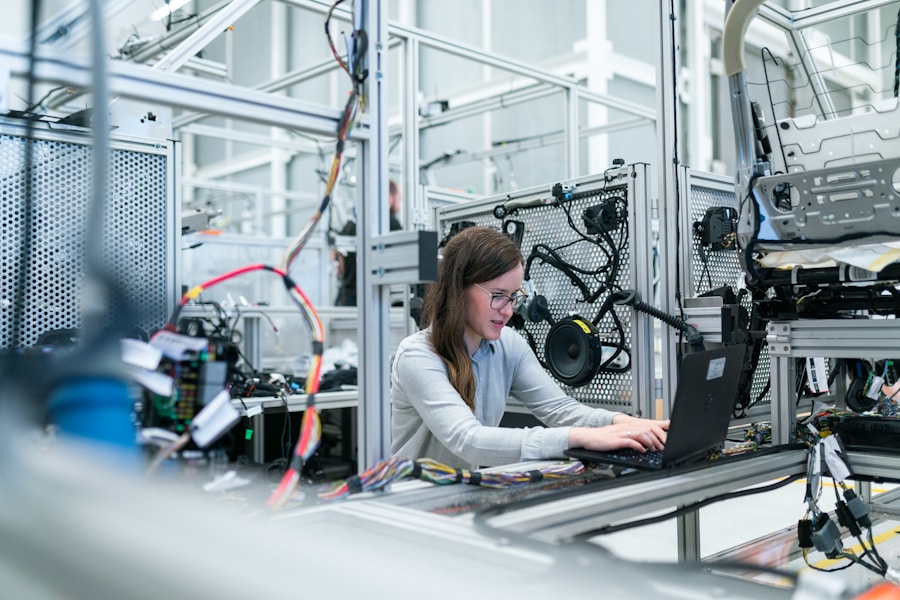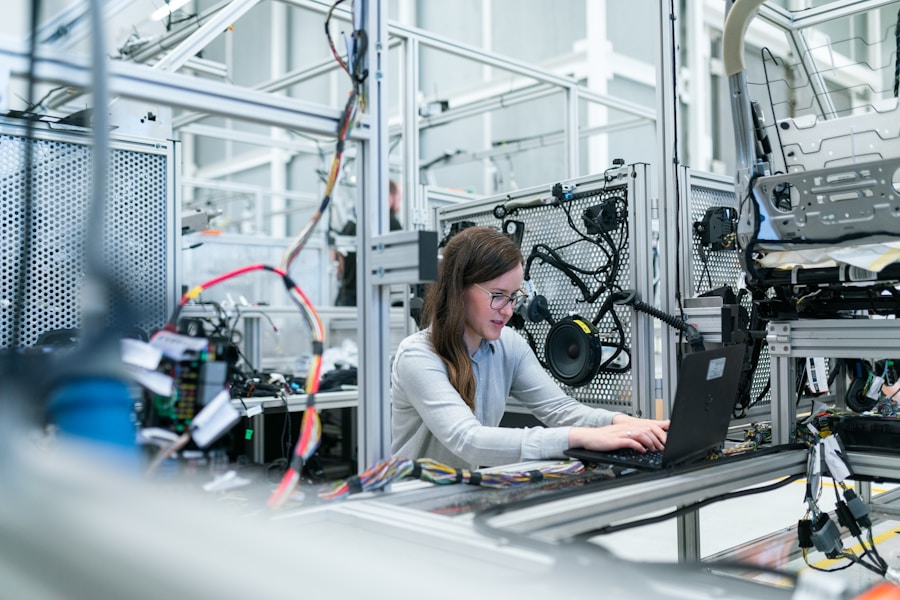Empathy is the ability to understand and share the feelings of others. It plays a crucial role in human connection, allowing us to relate to and support one another. However, in the digital age, where technology has become an integral part of our lives, empathy is facing new challenges. The rise of social media and online communication has created a barrier between individuals, making it difficult to truly understand and connect with others. This article explores the importance of empathy in the digital age and how virtual reality (VR) can be a powerful tool for building empathy.

The Importance of Empathy in the Digital Age
Empathy is essential for human connection and understanding. It allows us to put ourselves in someone else’s shoes and see the world from their perspective. In a world where technology dominates our interactions, empathy is more important than ever. It helps bridge the gap between individuals and fosters understanding and compassion.
However, empathy faces unique challenges in the digital age. Online communication lacks the nonverbal cues and emotional nuances that are present in face-to-face interactions. This can lead to misunderstandings and misinterpretations, making it difficult to truly empathize with others. Additionally, social media platforms often encourage self-promotion and highlight only the positive aspects of people’s lives, creating a distorted view of reality and hindering genuine connection.
Virtual Reality: The Future of Empathy
Virtual reality (VR) is an immersive technology that simulates a realistic environment or experience. It has the potential to revolutionize empathy-building by providing users with a first-hand experience of someone else’s perspective. VR can transport individuals to different locations, time periods, or even into someone else’s body, allowing them to see and feel what another person experiences.
There are already numerous examples of VR empathy experiences that have been developed. For example, “The Machine to be Another” allows users to swap bodies with someone else and experience the world through their eyes. “Clouds Over Sidra” takes users into a Syrian refugee camp, providing a glimpse into the lives of those affected by the crisis. These experiences have been shown to increase empathy and understanding in users.
How Virtual Reality is Changing the Game
Virtual reality offers unique features that enhance empathy-building. Firstly, it provides a sense of presence and immersion that is not possible with other mediums. Users feel as though they are truly present in the virtual environment, which increases their emotional engagement and connection to the experience. This heightened sense of presence makes it easier for individuals to empathize with others.
Secondly, VR allows for a level of embodiment that is not possible with traditional empathy-building methods. Users can embody different avatars or characters, which helps them develop a deeper understanding of what it feels like to be in someone else’s shoes. This embodiment can lead to a more profound empathetic response.
In comparison to other empathy-building methods, such as reading or watching videos, VR offers a more immersive and interactive experience. It allows users to actively engage with the content and explore different perspectives, leading to a more profound impact on empathy development.
The Benefits of Empathy in Virtual Reality
Empathy has numerous benefits for individuals and society as a whole. It promotes prosocial behavior, enhances communication skills, and fosters understanding and tolerance. Virtual reality has the potential to amplify these benefits by providing a more immersive and impactful empathy-building experience.
Research has shown that VR empathy experiences can lead to increased empathy and understanding in users. For example, a study conducted by Stanford University found that participants who experienced “The Machine to be Another” had higher levels of empathy towards others compared to those who did not participate in the VR experience. This suggests that VR has the potential to be an effective tool for building empathy.
The Role of Virtual Reality in Empathy Training
Virtual reality has the potential to be used in empathy training programs to help individuals develop their empathetic skills. By providing users with immersive and realistic experiences, VR can help individuals understand and connect with others on a deeper level.
There are already examples of empathy training programs that utilize virtual reality. For instance, the Virtual Human Interaction Lab at Stanford University has developed a program called “Becoming Homeless,” which allows users to experience what it feels like to be homeless. The program aims to increase empathy and understanding towards the homeless population and reduce stigma.
These empathy training programs using VR have shown promising results. Participants who went through the “Becoming Homeless” program reported increased empathy and understanding towards the homeless population. This suggests that VR can be an effective tool for empathy training.
The Impact of Virtual Reality on Empathy Development
Research has shown that virtual reality can have a significant impact on empathy development. Studies have found that VR experiences can lead to increased empathy, perspective-taking, and understanding in users.
For example, a study conducted by the University of Barcelona found that participants who experienced a VR simulation of a forest fire had higher levels of empathy towards victims of natural disasters compared to those who did not participate in the VR experience. This suggests that VR can help individuals develop a more empathetic response towards others.
Another study conducted by the University of Southern California found that participants who experienced a VR simulation of a racial bias incident had increased levels of empathy towards victims of racial discrimination. This suggests that VR can help individuals develop a greater understanding and compassion for marginalized groups.
Virtual Reality: A Tool for Building Empathy
Virtual reality has the potential to be used in various settings to build empathy. It can be utilized in education, healthcare, corporate training, and even entertainment to help individuals develop their empathetic skills.
In education, VR can transport students to different historical events or cultural settings, allowing them to experience what it feels like to be in a different time period or culture. This can help foster understanding and tolerance among students.
In healthcare, VR can be used to train medical professionals to empathize with patients and understand their experiences. For example, medical students can use VR to simulate the perspective of a patient with a specific medical condition, helping them develop a more empathetic approach to patient care.
In corporate training, VR can be used to simulate workplace scenarios and help employees develop their interpersonal skills and empathy towards colleagues. This can lead to a more inclusive and supportive work environment.
The Ethics of Empathy in Virtual Reality
While virtual reality has the potential to be a powerful tool for building empathy, there are potential ethical concerns that need to be addressed. For example, VR experiences that simulate traumatic events or sensitive topics could potentially retraumatize individuals or cause distress.
It is crucial for developers and users of VR empathy experiences to approach the technology responsibly. This includes providing appropriate support and debriefing for users who may have had a challenging emotional response to the experience. It also involves ensuring that the content is accurate, respectful, and does not exploit the experiences of others.
Overcoming the Limitations of Empathy in the Digital Age
Building empathy in a digital world presents unique challenges. However, virtual reality has the potential to help overcome these limitations by providing a more immersive and impactful empathy-building experience.
Virtual reality allows individuals to step out of their own perspective and truly understand what it feels like to be someone else. It provides a level of presence and embodiment that is not possible with other mediums, allowing users to develop a deeper connection and empathy towards others.
The Future of Empathy in Virtual Reality
The future of empathy in virtual reality is promising. As technology continues to advance, VR experiences will become even more immersive and realistic, further enhancing empathy-building capabilities.
There is also potential for VR to be combined with other technologies, such as haptic feedback or biometric sensors, to create an even more immersive and impactful empathy-building experience. This could further enhance the ability of VR to foster understanding and compassion among individuals.
The Intersection of Technology and Empathy in the Digital Age
The ongoing relationship between technology and empathy is complex. While technology has the potential to hinder empathy, it also has the power to enhance it. Virtual reality is just one example of how technology can be used as a tool for building empathy in the digital age.
As technology continues to evolve, it is crucial that we use it responsibly and ethically to foster empathy and understanding. By harnessing the power of technology, we can create a more empathetic and compassionate society.
Empathy is crucial in the digital age, where technology often creates barriers between individuals. Virtual reality has the potential to be a powerful tool for building empathy by providing immersive and realistic experiences that allow individuals to understand and connect with others on a deeper level.
Through VR empathy experiences, individuals can step into someone else’s shoes and see the world from their perspective. This can lead to increased empathy, understanding, and compassion, both on an individual level and within society as a whole.
As technology continues to advance, virtual reality will become an even more impactful tool for building empathy. It is up to us to use this technology responsibly and ethically to foster empathy in the digital age. By doing so, we can create a more empathetic and connected world.

Leave a Reply